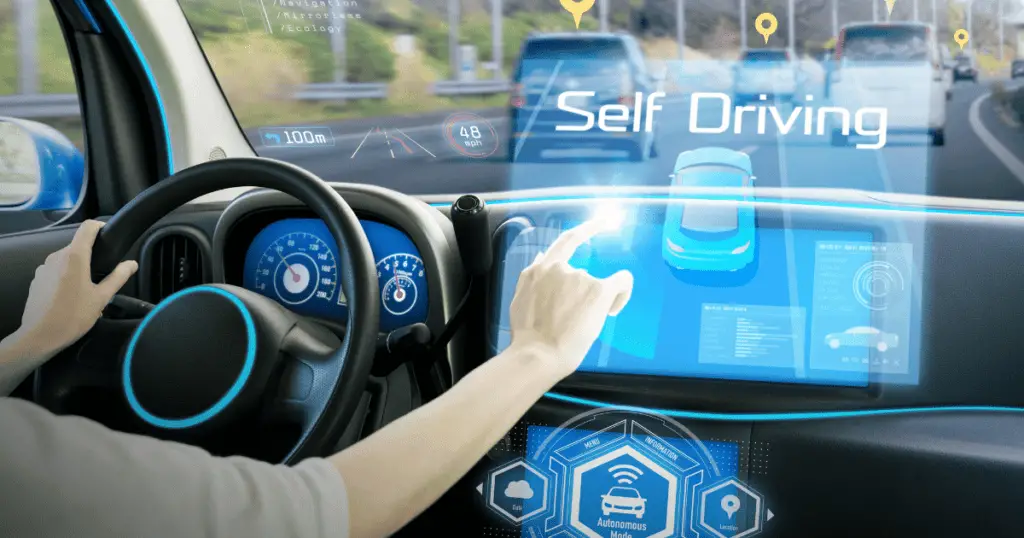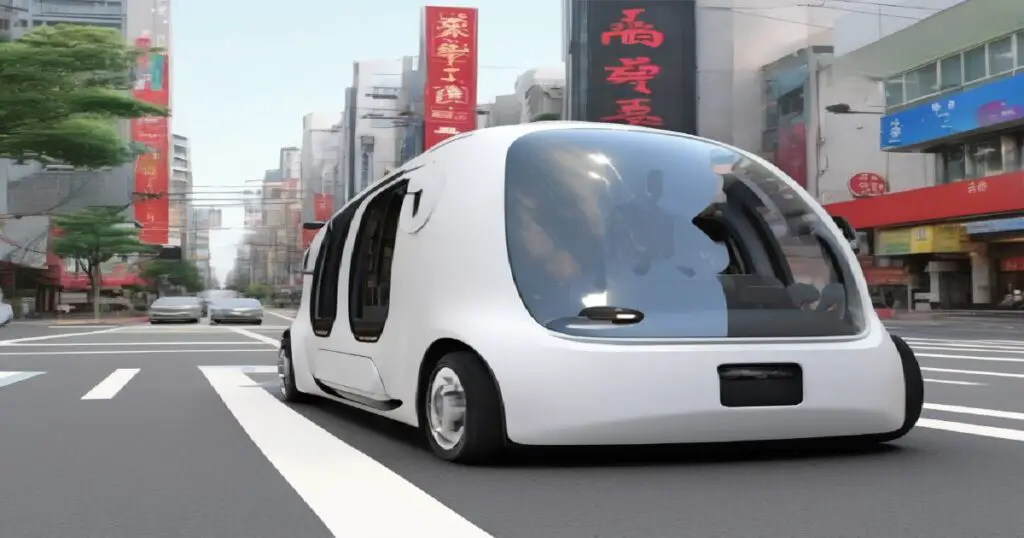Welcome to the future of transportation in Taipei! Imagine hopping into a vehicle that effortlessly navigates through bustling city streets, seamlessly gliding you from one destination to another. Now, picture this vehicle as a charming and iconic gharry – yes, you read that right! Taipei is pioneering the Self-Driving Gharry revolution, combining tradition with innovation in an extraordinary way.
In this blog post, I will delve into the fascinating world of Taipei’s Self-Driving Gharry – exploring their development, how they work, the benefits they bring to urban life, and the challenges faced along the way. Join me on this exciting ride as we embark on a journey towards a futuristic mode of transport that promises efficiency, sustainability, and endless possibilities.
1. The Development of Taipei’s Self-Driving Gharry
The development of Taipei’s self-driving gharry has been an exciting journey, fueled by cutting-edge technology and a vision for the future of transportation. As one of the most populous cities in Asia, Taipei faces unique challenges when it comes to traffic congestion and public transportation efficiency. The introduction of self-driving gharry aims to tackle these issues head-on.
From its inception, the development process has been marked by collaboration between government agencies, tech companies, and automobile manufacturers. By combining their expertise and resources, they have made significant strides in creating a reliable and efficient autonomous vehicle system that can navigate through Taipei’s bustling streets.
One of the key factors driving this development is the integration of advanced artificial intelligence (AI) systems into these vehicles. These AI systems use sensors such as cameras, radar, and lidar to gather real-time data about their surroundings. This data is then processed through complex algorithms that allow the vehicles to make informed decisions on things like route planning, obstacle detection, and pedestrian safety.
Another crucial aspect of this development is ensuring seamless connectivity between these self-driving gharry and existing infrastructure. This involves integrating them with smart city technologies such as traffic management systems and communication networks. By doing so, authorities can monitor vehicle movements in real-time while also providing passengers with up-to-date information on routes and schedules.
The benefits offered by self-driving gharry are numerous. They have the potential to greatly reduce traffic congestion by optimizing route planning based on current conditions. Additionally, since these vehicles operate autonomously without human drivers behind the wheel, there is less room for human error or fatigue-related accidents.
2. How do they work?
How do Taipei’s Self-Driving Gharry actually work? It’s a question that piques the curiosity of many. These futuristic rides are equipped with state-of-the-art technology that allows them to navigate the bustling streets of Taipei autonomously.
At the heart of these self-driving gharry is a complex system of sensors, cameras, and artificial intelligence algorithms. These sensors constantly scan their surroundings, detecting objects and obstacles in real-time. This data is then processed by powerful onboard computers, which make split-second decisions on how to maneuver through traffic.
To ensure passenger safety and comfort, these vehicles are also equipped with advanced GPS systems, which help determine the most efficient routes to reach destinations. Additionally, they have sophisticated communication systems that allow them to interact with other vehicles on the road and traffic signals.
The autonomous nature of these gharry means that passengers can simply sit back and relax during their journey. They no longer need to worry about navigating busy streets or finding parking spaces; it’s all taken care of by the vehicle itself.
These self-driving gharry are not only convenient but also environmentally friendly. By optimizing routes and reducing unnecessary stops or idling time, they contribute towards minimizing congestion and emissions in urban areas.
While there may be initial concerns regarding safety regulations and public acceptance for such innovative transportation solutions, Taipei has been proactive in addressing these issues head-on. Rigorous testing protocols ensure that these autonomous vehicles meet stringent safety standards before being deployed on city roads.


3. Benefits of Self-Driving Gharry
Convenience is one of the key advantages that self-driving gharry offer. With these futuristic rides, passengers can simply hop in and relax as the vehicle takes them to their destination. No need to worry about navigating through busy streets or finding parking spots.
Another benefit is improved safety. Self-driving gharry are equipped with advanced sensors and artificial intelligence technology that allow them to detect obstacles, pedestrians, and other vehicles on the road. This reduces the risk of accidents caused by human error.
Moreover, self-driving gharry have the potential to reduce traffic congestion in cities like Taipei. These autonomous vehicles can communicate with each other and optimize routes in real-time, ensuring efficient transportation for everyone.
Additionally, self-driving gharry could be a more sustainable option for urban transport. By using electric power and optimizing routes, they can help reduce greenhouse gas emissions and contribute towards a cleaner environment.
Furthermore, self-driving gharry could also provide increased accessibility for individuals who are unable to drive due to physical disabilities or age-related limitations. These vehicles can offer independence and mobility for those who may otherwise struggle with transportation options.
Self-driving gharry have numerous benefits including convenience, improved safety, reduced traffic congestion, sustainability, and increased accessibility. As this technology continues to advance and gain public acceptance in Taipei – we expect even more advantages will emerge.
4. Challenges and Solutions for Implementation
Implementing self-driving gharry in Taipei comes with its fair share of challenges. One major hurdle is the need for extensive infrastructure upgrades to support autonomous vehicles. The current road system would have to be equipped with advanced sensors, communication networks, and traffic management systems. This requires significant investment and careful planning.
Another challenge lies in ensuring the safety of passengers and pedestrians. Self-driving technology must be foolproof when it comes to detecting obstacles, avoiding collisions, and making split-second decisions on the road. Rigorous testing is necessary to verify the reliability of these systems under various conditions.
Additionally, there are legal and regulatory barriers that need to be addressed. As self-driving gharry become more prevalent on Taipei’s streets, laws will need to adapt accordingly. Questions around liability in case of accidents or malfunctions arise as well.
To overcome these challenges, collaboration between government agencies, tech companies, and transportation experts is crucial. They can work together to establish guidelines for testing autonomous vehicles and ensure compliance with safety standards.
Investment in research and development is another essential aspect of overcoming implementation challenges. Continued innovation will allow for advancements in sensor technology, artificial intelligence capabilities, connectivity solutions, and more reliable navigation systems.
5. Safety Regulations and Public Acceptance
Ensuring the safety of autonomous vehicles is a top priority for Taipei’s self-driving gharry. To address this, stringent safety regulations have been put in place to govern their operation on the roads. These regulations cover everything from vehicle design and performance standards to emergency response protocols.
One key aspect of the safety regulations is the requirement for self-driving gharry to undergo rigorous testing and certification before being allowed on public roads. This includes extensive simulations, closed-course trials, and real-world driving tests in controlled environments.
Public acceptance of self-driving gharry also plays a crucial role in their successful implementation. While some people may be skeptical about autonomous vehicles initially, efforts are being made to educate the public about their benefits and alleviate any concerns they may have.
To gain public trust, transparency regarding data collection and privacy protection is essential. It’s important that individuals feel confident that their personal information will be safeguarded when using these futuristic rides.
Furthermore, ongoing communication between government authorities, manufacturers, and the public is vital to address any issues or questions that arise during the introduction of self-driving gharry into Taipei’s transportation system.
By adhering to strict safety regulations and actively engaging with the public throughout the process, Taipei aims to foster a climate of trust and acceptance for these innovative modes of transportation. The ultimate goal is not only safer travel but also reduced congestion and improved efficiency on city streets.
6. Future Possibilities and Implications for Transportation


The development of self-driving Gharry in Taipei opens up a world of possibilities for transportation in the future. With advances in technology and the increasing need for sustainable and efficient modes of transportation, self-driving vehicles are likely to play a significant role.
One potential implication is increased accessibility. Self-driving Gharry could provide an affordable and convenient option for individuals who have limited access to public transportation or face mobility challenges. This could greatly enhance their ability to travel independently and engage with their community.
Another possibility is improved traffic flow. Self-driving vehicles can communicate with each other, allowing them to navigate through busy streets more efficiently. This can help reduce congestion, decrease travel times, and improve overall traffic management in densely populated areas like Taipei.
Furthermore, autonomous vehicles have the potential to revolutionize logistics and delivery services. Companies could utilize self-driving Gharry as part of their fleet to transport goods more quickly and reliably, leading to enhanced supply chain efficiency.
However, there are also implications that need careful consideration. One major concern is job displacement within the transportation sector as traditional drivers may be replaced by automated systems. It will be crucial to ensure adequate support programs are put in place for affected workers during this transition period.
Additionally, safety regulations must keep pace with technological advancements. Governments need to establish comprehensive frameworks that address issues such as liability in case of accidents involving self-driving vehicles.
Public acceptance also plays a vital role in shaping the future of self-driving Gharry. Building trust among users regarding safety features, data privacy concerns, and ethical considerations associated with autonomous driving will be key factors influencing adoption rates.
Conclusion
The future of transportation is evolving at an incredible pace, and Taipei’s self-driving gharry are at the forefront of this exciting revolution. These innovative vehicles have the potential to reshape urban mobility, providing a convenient and efficient mode of transport for residents and visitors alike.
As I’ve explored in this article, the development of self-driving gharry in Taipei has been a testament to human ingenuity and technological advancements. From their inception to their implementation on the city streets, these autonomous vehicles have showcased remarkable progress.
With their advanced sensors, artificial intelligence systems, and connectivity features, self-driving gharry offer numerous benefits. They can enhance safety by minimizing human error on the roads while reducing traffic congestion through optimized routes. Additionally, they provide accessibility options for individuals with disabilities or limited mobility.
However, challenges surrounding infrastructure integration, regulatory frameworks, and public acceptance must be addressed for widespread adoption. By collaborating with stakeholders across various industries and engaging in open dialogue with communities, these obstacles can be overcome.
Looking ahead into the future possibilities of self-driving gharry holds immense promise. With further advancements in technology such as 5G connectivity and increased automation capabilities, we may witness even more efficient transportation systems that cater to individual needs seamlessly.
Frequently Asked Questions (FAQs)
Q1. Are self-driving gharry currently available for public use in Taipei?
No, at the moment, self-driving gharry are still in the development phase and not yet available for public use. However, Taipei has been making significant progress in their development and it is expected that they will be introduced to the public in the near future.
Q2. How do self-driving gharry navigate through traffic?
Self-driving gharry utilize advanced technologies such as artificial intelligence, sensors, cameras, and GPS systems to navigate through traffic. These technologies allow them to detect obstacles, follow road rules, and make decisions based on real-time data.
Q3. What are some of the benefits of using self-driving gharry?
Self-driving gharry offer numerous benefits including increased safety on the roads as they eliminate human error. They also have the potential to reduce congestion by optimizing routes and reducing travel times. Additionally, they can provide a more comfortable and convenient transportation option for passengers.
Q4. What challenges need to be overcome before implementing self-driving gharry?
There are several challenges that need to be addressed before implementing self-driving gharry including ensuring their safety and reliability in various weather conditions and unexpected situations. Regulatory frameworks also need to be established to govern their operation on public roads.
Q5. How receptive is the public towards self-driving technology?
Public acceptance of self-driving technology varies among individuals. While some people may have concerns about safety or loss of control when it comes to autonomous vehicles like Gharry , others see them as an exciting innovation with great potential for improving transportation systems.

